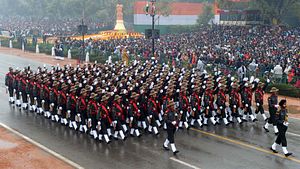The Supreme Court has agreed to set up a new bench to hear cases of killings in alleged fake encounters in Manipur. Justice Madan Bhimrao Lokur, who was hearing the case, retired in December.
The issue is now back in the headlines thanks to the Supreme Court’s decision. It’s not the first time the court has gotten involved – in 2017, the Supreme Court ordered the Central Bureau of Investigation (CBI) to investigate 1,528 murders in alleged encounters with the army and police from 2000 to 2012. The court has also pulled up the Manipur government for its silence on this matter.
India’s northeast, including the state of Manipur, has been known for militant activities since its formation. In order to deal with this militancy, the central government imposed the Armed Forces Special Powers Act (AFSPA) in 1958. This law gave nearly unlimited rights to the security forces to overcome the rapidly spreading insurgency in the northeastern region.
Under the AFSPA, the security forces have the right to use deadly force with legal immunity. The army can also keep any person in detention without a warrant indefinitely. The AFSPA was first implemented in the Naga Hills, which was then part of Assam. Following in the footsteps of militancy, it has gradually been implemented in all the northeastern states. It was withdrawn in Meghalaya last year, but is still applicable in some parts of Arunachal Pradesh as well as in Manipur and Assam.
The history of revolt in Manipur is as old as the formation of the state. Originally, the people of the state were not interested in a merger in India. Following India’s independence in 1947, the Maharaja of Manipur declared it a constitutional monarchy and held election for its parliament. But two years later, the Maharaja agreed to merge Manipur in India; local Matic community leaders claim that the Maharaja was under heavy pressure to do so. Manipur got the status of Union Territory in the year 1963. Eventually, in 1972, it was made a full state.
The uprising against the government of India in Manipur started in 1964. At that time, the United National Liberation Front (UNLF), an extremist organization, started an underground movement for freedom. Following in the UNLF’s footsteps were dozens of other militant outfits in the 1970s.
There are still many such small organizations active in the state even today. The AFSPA was implemented in Manipur to suppress them, but there are frequents allegations of its misuse.
The Supreme Court case underway involves the investigation of fake encounters under the AFSPA. The investigation should be completed soon if there is any hope that the atrocities of the security forces can be curtailed.
During the last two decades, voices of opposition against the controversial law have been rising. But the governments coming to the power at various levels have continued to prolong the AFSPA, despite promises to abolish it. In one of the most famous protests in 2004, 30 women from Manipur walked naked through the streets of Imphal to decry the gang rape and murder of a young woman. The case was never prosecuted because of the legal immunity granted under the AFSPA to the Indian paramilitary unit responsible. In yet another famous example, Irom Sharmila earned the name of Iron Lady for her 16-year hunger strike against this law.
Still, the AFSPA reigns in Manipur. And allegations continue to surface that by taking advantage of the privileges granted under the law, the Indian armed forces have killed hundreds of ordinary people and relabeled them “militants” in hundreds of fake encounters from 2000 to 2012.
A special team of the CBI has been investigating these fake encounters since 2017 on the directions of the Supreme Court. On April 20 of that year, the army had said in court that first information reports (FIRs), the first step in a criminal case, cannot be registered for anti-insurgency operations in “extremist” states like Jammu and Kashmir and Manipur. The army argued that the judicial inquiry against its actions in the said states is not fair, and it also argued that judicial investigations of suspicious deaths conducted by district judges at the local level often go against the security forces. At the same time, the central government had also said in the Supreme Court that the army cannot be questioned for its actions in military campaigns, essentially ruling out any judicial inquiry, and that the deaths in Manipur were not due to fake encounters but to anti-insurgency operations.
The legal views on this and other related questions have to some extent been made clear before. For instance, in 2016, the Supreme Court had clearly stated that the concept of officers and jawans in the security forces being completely exempted from punishment is not correct. Following from this, any of their activities can be challenged in criminal court, contrary to protestations that have been advanced on this front.
Given all this, the hope is that the Supreme Court-mandated CBI investigation is likely to uncover the truth behind the killings of thousands of people in alleged fake encounters. After the formation of a new bench, this investigation is expected to accelerate, bringing with it hope for justice. Even if that justice is delayed, hopefully it will not continue to be denied.
Rohit Dhyani is a journalist and professional documentary filmmaker. Follow him on Twitter: @RohitDhyani.

































